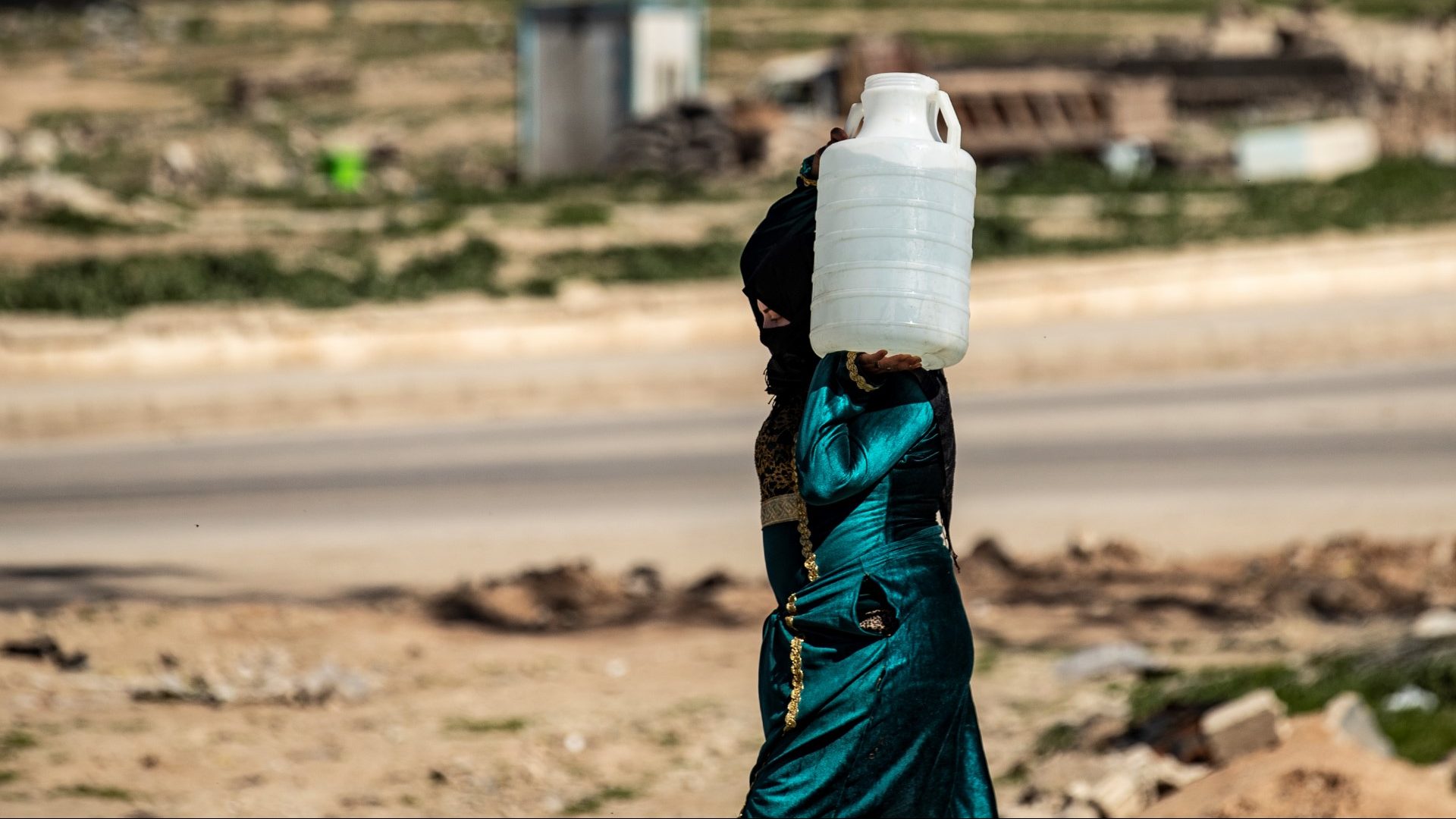The southern province of Quneitra is facing an unprecedented water crisis, with 98% of its dams now at what experts call the “dead storage” level—rendering them incapable of irrigating crops or supplying nearby dams. The situation, driven by prolonged drought and declining rainfall linked to climate change, has prompted urgent warnings from local water authorities about an impending environmental and agricultural disaster.
According to the Quneitra Directorate of Water Resources, rainfall this season has amounted to just 25% of the province’s annual average of 900 millimetres. The deficit has led to the complete drying of five out of six key dams, with the exception of the Al-Mantara Dam, which retained 18 million cubic meters of water from the previous season.
The entire reserve in Al-Mantara was released this year to supply water to both Quneitra and neighboring Daraa province. Engineer Bassam al-Shamali, director of water resources in Quneitra, said the water was divided between the two provinces: 10 million cubic meters were allocated to Daraa’s dams, while 8 million were earmarked for Quneitra’s farmers—2 million for winter crops and 6 million for summer irrigation.
All Six Dams Have Gone Dry
Shamali confirmed that all six of Quneitra’s dams—Hajja, Raqad, Burayqa, Ghadeer al-Bustan, Ruwayhina, and Kodna—received no rain or snow runoff this year, bringing them to critical “dead storage” levels. Only 2.5 million cubic meters remain in Al-Mantara, now being used for late-season irrigation. Authorities expect this volume to be depleted by the end of the summer.
In response to the worsening conditions, water authorities in Quneitra and Daraa have coordinated efforts to secure “emergency water allocations.” On April 16, officials opened the outlet at Kodna Dam to supply water to Raqad Dam in Daraa at a rate of 1 cubic meter per second. However, pumping operations were halted on May 10 after the source dams reached dead storage.
Shamali urged farmers to conserve water, plant less water-intensive crops, and avoid traditional farming methods that strain already scarce water supplies.
Aging Infrastructure and Structural Deficiencies
Despite severe infrastructure challenges, the Directorate of Irrigation continues daily maintenance on aging irrigation networks—repairing breakdowns, cleaning pipelines and canals—to ensure that the limited remaining water reaches farmers.
Shamali stressed that addressing the water crisis requires better management, close monitoring of every water source, and urgent investment in rehabilitating outdated irrigation systems that contribute to excessive water loss.
Experts warn that the crisis in Quneitra is not a seasonal anomaly but a symptom of deeper climate and water system changes across Syria. Without a national strategy to manage water resources, invest in modern irrigation networks, and diversify water sources, what is now a dire emergency could soon escalate into a full-blown agricultural and economic catastrophe.
This article was translated and edited by The Syrian Observer. The Syrian Observer has not verified the content of this story. Responsibility for the information and views set out in this article lies entirely with the author.


